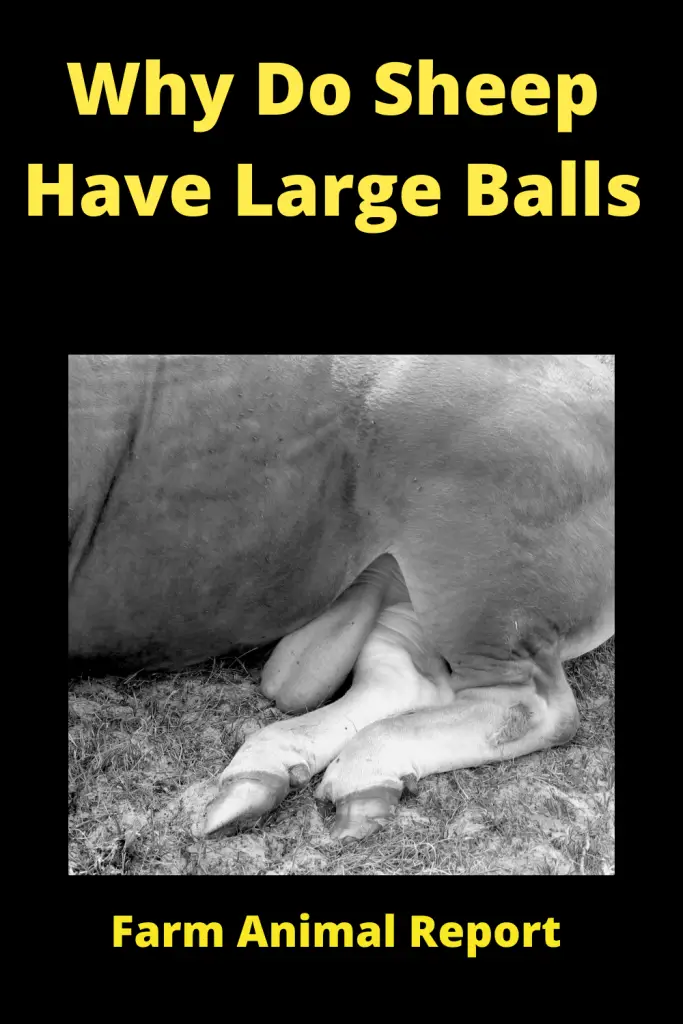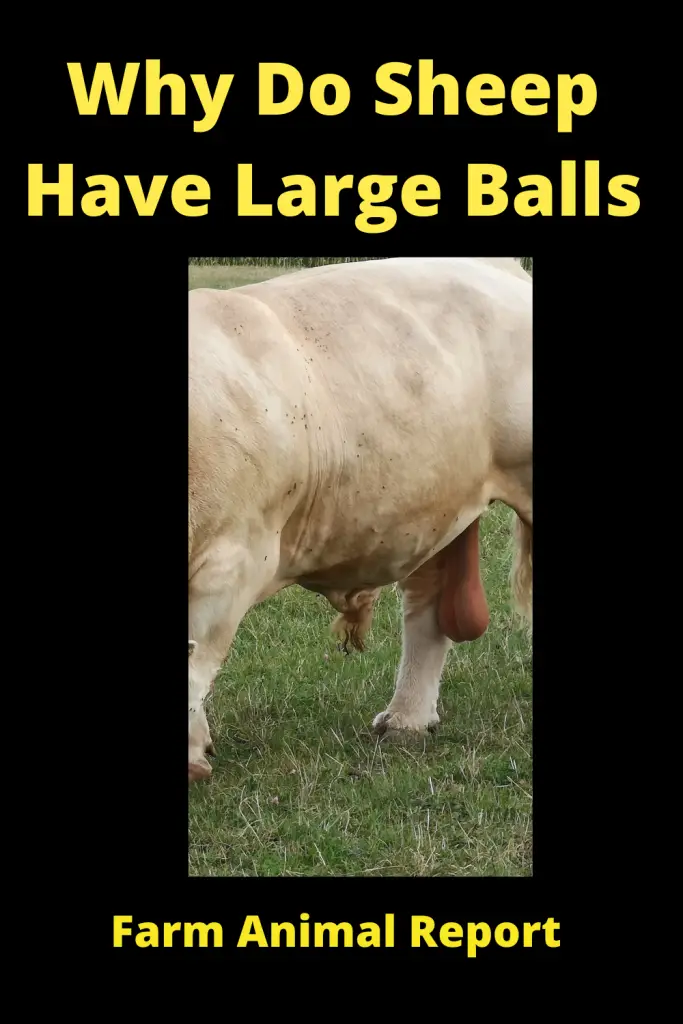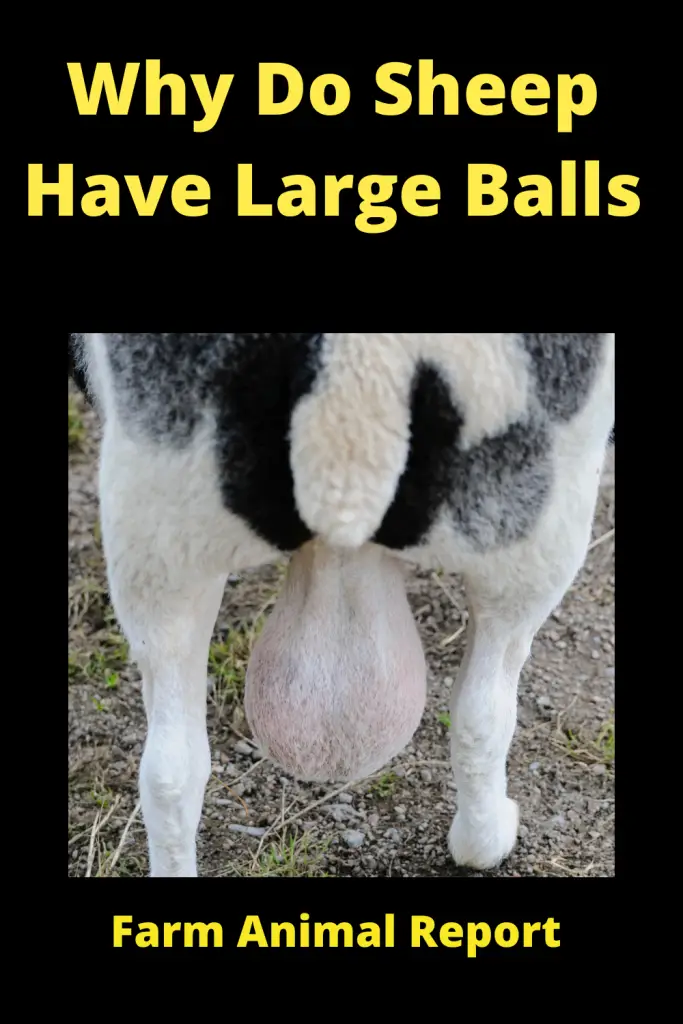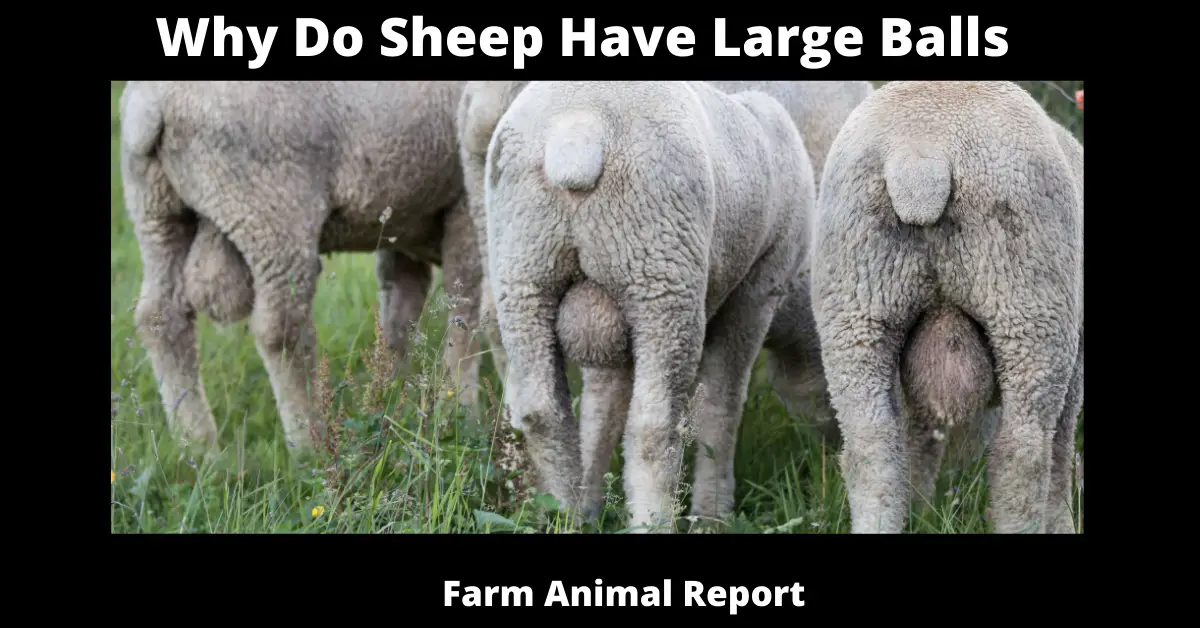As a general rule – Testicle size is a good indication of the sperm-producing ability of individual rams. If Not Diseased Represents sperm storage capacity. It will be the Largest During the Months of August – October. Rams can Be Given a (BSE) Breeding Soundness Examine by a Veterinarian to determine virality.
Sheep Balls – Why Do Sheep Have Huge Balls
Lamb Fries
Sheep Balls – Puberty typically occurs in the ram at 6 months. It is defined as the point at which the ram develops an interest in sexual activity and produces spermatozoa in sufficient numbers to achieve pregnancy in ewes. The exact age at puberty depends somewhat on breed and time of birth. Rams born early in the spring are older at puberty than late-born lambs.

Sheep Balls – Moreover, rams that are periodically exposed to cycling ewes tend to reach puberty earlier. Rams are seasonal breeders: Sperm quality, daily sperm output, and sexual activity are modulated by the increased periods of darkness that are typical of fall.
This seasonality in the ram also is manifested by an increase in the ball circumference (by approximately 1 to 2 cm).
Check Our Amazons Resources on Sheep
The increase in melatonin, which is secreted from the pineal gland during the dark hours as day length shortens, is responsible for many of the physiologic mechanisms associated with the transition of the ram from non-breeding to the breeding season.
Manipulation of light-dark intervals and the use of melatonin can alter the breeding season of rams.
A change in the sexual attitude of the ram toward the ewe as day length decreases defines the onset of the breeding season. He becomes more sexually interested in the female, and courtship behavior occurs more frequently.
Rams display a typical flehmen response to females in estrus after sniffing the vulva region and urine from the estrus female. The ram often strikes out at the female with one front leg before mounting her.
The physiologic changes in testicular size, mating behavior, and semen quality are caused by the activation of the hypothalamus and a decrease in the effectiveness of testosterone on the negative inhibition of gonadotropin-releasing hormone (GnRH).
Significant differences are seen between the breeding and the nonbreeding season with respect to the pattern of GnRH and luteinizing hormone (LH) pulses and the response of the pituitary gland to GnRH.
Structure of Balls in Ram
The balls are suspended away from the body within the pendulous scrotum. The scrotum is composed of undulating epidermis that may or may not is covered by wool or hair, depending on the breed and husbandry practices. A rich plexus of blood vessels, lymphatics, and sweat glands lie beneath the skin.
The dartos, a smooth muscle layer, is connected to the tunics of the balls by the scrotal fascia. The scrotal fascia is the connective tissue that typically is broken down in the separation of the skin from the testicle during routine castration.
The vaginal tunics are outcroppings of the peritoneum and form a protective covering over the testicles.
The space between the two layers of the tunic (parietal and visceral) as it reflects around the testicle normally contains a small amount of peritoneal fluid. The scrotal septum, composed primarily of the dartos muscle, divides the scrotum into two halves.
The testicle itself is surrounded by a thick layer of fibrous connective tissue known as the tunica albuginea. The parenchyma of the balls is composed of seminiferous tubules that contain the germ cells and their supporting cells (Sertoli cells).
The seminiferous tubules drain into the rete ball, which in turn is drained by 10 to 12 efferent ducts. These ducts drain into the head of the epididymis, which is located on the dorsal craniolateral aspect of the ball.
The body of the epididymis curves around the lateral portion of the balls and ends caudomedially as the tail. The tubular structure is reflected dorsally and becomes the vas deferens. Rams and bucks have a full complement of accessory sex glands.
The small bulbourethral glands are located caudally in the pelvic cavity on either side of the pelvic urethra and can be palpated rectally. These animals also have lobulated vesicular glands, disseminate prostates, and a widening of the vas deferens known as the ampulla.
Spermatogenesis requires approximately 49 to 60 days from the start of germ cell division until the spermatozoa are released from the seminiferous tubules. Another 10 days to 2 weeks are required for the sperm to pass from the seminiferous tubules through the epididymis.
Breeding Soundness Examination in the Ram
A breeding soundness examination (BSE) should be performed on all rams before the beginning of the breeding season. With the ram being expected to breed as many as 100 ewes during a season, his individual worth far outweighs the cost of a BSE. A proper BSE consists of a thorough physical examination with special attention to the scrotum and testicles, as well as an evaluation of the sperm quality.
See Our Extensive Guide – 16 Ways to Make Money Sheep Farming
Most BSEs do not routinely include an evaluation of the ram’s libido or his physical ability to make intromission. The veterinarian should communicate clearly with the client regarding the limitations of the BSE performed and the need for some sort of libido testing.
Such testing often can be accomplished by directly observing the animal in the first part of the breeding season. Large sheep producers may be encouraged to keep an extra 10% of rams deemed satisfactory for reproductive purposes by veterinary examination, to ensure adequate “ram power.”
Examination of Reproductive Tract
The scrotum should be palpated to ensure that both balls are present, approximately equal in size, and of firm consistency; any localized swellings or areas of induration should be noted. The head and tail of the epididymis are palpated to detect swelling, pain, or signs of inflammation. Epididymitis is a relatively common problem in rams.
Any ram exhibiting signs of epididymitis should be considered to be infected with Brucella Ovis until proved otherwise. The spermatic cord should be examined specifically for deformities in the vascular plexus and vas deferens.
The gland usually can be extended by pressing down around the external preputial orifice and grasping the protruding gland with a gauze pad (Figure 8-1).

Occasionally the sigmoid flexure may need to be straightened to assist in extending the gland. The gland is then carefully inspected for evidence of active lesions or old scars.
The gland can be held in extension by wrapping a strip of gauze around the junction between the free portion of the gland and the prepuce. This method also is helpful in collecting perm by electro stimulation. The gland generally is easier to extend when the animal is being held up on the rump than when it is in lateral recumbency.
Scrotal Circumference
To determine the SC, the clinician should pull both of the ram’s balls ventrally into the scrotum and measure it at its largest circumference, using a tape measure marked in centimeters. Care must be taken with breeds that have heavy scrotal wool, because wool may falsely enlarge the measured circumference.
Taking the average of several measurements can increase the accuracy of the SC value obtained. The tape should be snug on the scrotum, while barely indenting the skin so that the tape does not slide out of position (Figure 8-2). SC in the ram is highly heritable and appears to be related to sperm output and age at puberty.
For the selection of ram lambs, the testicular diameter at 170 days provides a long-range prediction of post-pubertal testicular size and sperm output. SC is a major criterion for selecting replacement rams. Minimum accepted SC’s of 30 cm for ram lambs weighing more than 150 lb., 33 cm for 12- to 18-month-old rams, and 36 cm for rams weighing more than 250 lb. have been suggested.
Strictly on the basis of age, rams at 8 to 14 months should have SC’s of 28 to 36 cm to be classified as satisfactory and more than 36 cm to be classified as exceptional. Rams older than 14 months should have SC’s of 32 to 40 cm to be classified as satisfactory and more than 40 cm to be classified as exceptional.
Scrotal size usually is greatest from August to October. Smaller testicular measurements (0.5 to 1.5 cm less) are to be expected when rams are tested outside of the normal breeding season (February to April) or during periods of extreme sexual activity.
Sperm Production in Rams
Sperm production in rams takes 49 days. You must ensure rams are well looked after during the 7-8-week period leading up to joining, to avoid factors that could adversely affect the sperm and lead to temporary infertility.
Checking Ram Sperm Reserves
The epididymis is a part of the ram’s balls that absorbs testicular fluid and enables large quantities of sperm to be stored in the smallest possible space. It’s located in the back-rear section of each testicle.
Checking the tail of the epididymis can give you a useful guide to the level of sperm reserves in rams. A large, firm (but not hard and diseased) epididymis is an indication of good reserves, while a small, soft tail indicates the opposite.
Ball Size in Rams
Ball size is a good indication of the sperm-producing ability of individual rams. Sperm are produced by testicular tissue at a reasonably constant rate of about 20 million sperm per gram of ball per day. You can check the size of a ram’s balls for the reasonably good judgment of the ram’s stores of sperm.
Large balls can also be an indicator of higher levels of testosterone, which is an important factor in the ram’s sexual interest. It’s important to avoid selecting rams with small balls, as this is equally likely to be a sign of low sperm availability in the animal.

Temperature and Sperm Production in Rams
For normal sperm production to occur, the balls need to be kept cool. A ram’s natural cooling mechanism includes large sweat glands in the skin of the scrotum and a system of muscles that raise or lower the balls into the body for the purpose of temperature regulation.
Blood flow to the testes also helps to regulate temperature through a heat exchange mechanism.
Hot weather, such as long periods of temperatures over 32 degrees Celsius, or short spells of very high temperatures (38 degrees Celsius or higher), affects the production of viable sperm.
Rams that are heat stressed before joining could still successfully serve ewes up until the sperm stored before the heating is used (about 2-3 weeks), but it will then take 7 weeks to produce new viable sperm.
Conclusion
Sheep Farming for Wool Profitability Table
| Sheep | Lambs / 3 Per Yr | Space Required 20 Sq Feet - Each | Grazing Acres .3 / Sheep | Feed Required / Yr $100 | 15 Lbs Wool / Year | Average Price $ 10 / LB Wool | Total Revenue Possible |
|---|---|---|---|---|---|---|---|
| 1 | 3 | 60 sq ft | .9 acres | $ 300 | 45 lbs | $ 450 | $ 150 |
| 2 | 6 | 120 sq ft | 1.80 acres | $ 600 | 90 lbs | $ 900 | $ 300 |
| 5 | 15 | 300 sq ft | 4.5 acres | $ 1,500 | 225 lbs | $ 2,250 | $ 750 |
| 10 | 30 | 600 sq ft | 9 acres | $ 3,000 | 450 lbs | $ 4,500 | $ 1,500 |
| 20 | 60 | 1200 sq ft | 18 acres | $ 6,000 | 900 lbs | $ 9,000 | $ 3,000 |
| 30 | 90 | 2,700 sq ft | 27 acres | $ 9,000 | 1,350 lbs | $ 13,500 | $ 4,500 |
| 40 | 120 | 4800 sq ft | 36 acres | $ 12,000 | 1,800 lbs | $ 18,000 | $ 6,000 |
| 50 | 150 | 3,000 sq ft | 45 acres | $ 15,000 | 2,250 lbs | $ 22,500 | $ 7,500 |
| 100 | 300 | 6,000 sq ft | 90 acres | $ 30,000 | 4,500 lbs | $ 45,000 | $ 15,000 |
| 200 | 600 | 12,000 sq ft | 180 acres | $ 60,000 | 9,000 lbs | $ 90,000 | $ 30,000 |
Sheep can Produce 2 - 30 lbs of wool per year depending on Breed
Raw washed Wool Runs $ 6 - $ 14 using average $ 10
Feed 5 Months Buying Hay $ 100 rest Grazing
Please Check my Numbers
Sheep Farming for Milk Profitability Table
| Sheep | Lambs / 3 Per Yr | Space Required 20 Sq Feet - Each | Grazing Acres .3 / Sheep | Feed Required / Yr $100 | Wool $ 15 lb / Year | Average Price $ 10 / LB Wool | 90 Gallon/ Yr each ewe | Price $ 30 per Gallon | Total Wool Revenue Possible | Total Revenue Milk and Wool |
|---|---|---|---|---|---|---|---|---|---|---|
| 1 | 3 | 60 sq ft | .9 acres | $ 300 | 45 lbs | $ 450 | 270 | 8100 | $ 150 | 8,250 |
| 2 | 6 | 120 sq ft | 1.80 acres | $ 600 | 90 lbs | $ 900 | 540 | 16,200 | $ 300 | 16,500 |
| 5 | 15 | 300 sq ft | 4.5 acres | $ 1,500 | 225 lbs | $ 2,250 | 1350 | 40,500 | $ 750 | 41,250 |
| 10 | 30 | 600 sq ft | 9 acres | $ 3,000 | 450 lbs | $ 4,500 | 2700 | 81,000 | $ 1,500 | 82,500 |
| 20 | 60 | 1200 sq ft | 18 acres | $ 6,000 | 900 lbs | $ 9,000 | 5400 | 162,000 | $ 3,000 | 165,000 |
| 30 | 90 | 2,700 sq ft | 27 acres | $ 9,000 | 1,350 lbs | $ 13,500 | 8100 | 243,000 | $ 4,500 | 247,500 |
| 40 | 120 | 4800 sq ft | 36 acres | $ 12,000 | 1,800 lbs | $ 18,000 | 10,800 | 324,000 | $ 6,000 | 330,000 |
| 50 | 150 | 3,000 sq ft | 45 acres | $ 15,000 | 2,250 lbs | $ 22,500 | 13,500 | 405,000 | $ 7,500 | 412,500 |
| 100 | 300 | 6,000 sq ft | 90 acres | $ 30,000 | 4,500 lbs | $ 45,000 | 27,000 | 810,000 | $ 15,000 | 825,000 |
| 200 | 600 | 12,000 sq ft | 180 acres | $ 60,000 | 9,000 lbs | $ 90,000 | 54,000 | 1,620,000 | $ 30,000 | 1,650,000 |
Sheep can Produce 1/2 Gallon Milk per day / 180 Day Lactation
Raw Sheep Milk $9 - $25 per Quart - Used $ 30 per Gallon for Table
Feed 5 Months Buying Hay $ 100 rest Grazing
Please Check my Numbers
18 Breeds of Hair Sheep FAQ Table
| Hair Breeds of Sheep | Country Origin | Purpose of Breed | Use | Ewe Weight |
|---|---|---|---|---|
| Katahdins | Caribbean / Maine / Africa | To Graze Power lines / instead of Chemicals | Meat | 120 - 160 lbs |
| Dorper | South Africa | Thrive in Africa / Hot Climate | Meat / Fast Growing | 230 LBs |
| Blackbelly | America | Hot Climates | Meat | 150 LBs |
| St. Croix | Carribean | Came on Ships for Meat for sailors | Meat | 150 lbs |
| Romanovs | Russia | Primarily for Meat | Meat Wool - Double Coated | 110 lbs |
| Blackhead Persian | Africa / Somaila | Bred for High Quanity of Fat | Meat | 120 lbs |
| West African Dwarf | South / Central Africa | Meat | 55 lbs | |
| Red Maasi | East Africa | Bred for Hardiness and parasite Resistance | Meat | 77 Lbs |
| Wiltshire Horn | England | Do not suffer from Flystrike | Meat | 149 lbs |
| Royal White | United States / Texas | Bred for Tender Meat and Disease Resistants | Meat | 175 lbs |
| California Red | Not completely Hair sheep/ Combination of both/ Prod 2 lambs Yr | Meat | 140 lbs | |
| Damara | Egypt | Vigorous with fast growing / in extreme conditions | Meat | 110 lbs |
| Pelibuey | Cuba / Mexico | Tropical Sheep | Meat | 75 lbs |
| Africana | Columbia / Venezula | Meat | 110 lbs | |
| Morada | Brazil | Survive Scrub | Meat | 66 lbs |
| Brazillian Somaila | South Africa / Somali | Meat | ||
| Uda | Africa | Long Legged Sheep | Meat | 88 lbs |
| Touabire | Africa | Dairy / Meat | 77 lbs |
Minature Breeds of Sheep
| Breed | Height | Weight / Full Grown | Food Per Day | Lifespan | Wool / Hair Sheep | Cost |
|---|---|---|---|---|---|---|
| Quessant Sheep | !8" | 28 - 30 Lbs | 1/2 - 1lb | 10 - 12 Yrs | Wool | $ 350 - 450 |
| Baby Doll Southdown | 18" | 75 lbs | 2 - 3 Lbs | 10 - 12 Yrs | Wool | $ 350 -450 |
| Southdown Sheep | 18" - 24" | 130 lbs | 6 - 6 lbs | 10 - 12 Yrs | Wool | $ 180 - $ 600 |
| Cheviot Sheep | 20" | 130 Lbs | 6 - 6 lbs | 10 - 12 Yrs | Wool | $ 180 - $ 600 |
| Border Cheviot | 20" | 130 lbs | 6 - 6 lbs | 10 - 12 Yrs | Wool | $ 180 - $ 600 |
| Shetland Sheep | 24" | 75 - 100 lbs | 6 - 6 lbs | 10 - 12 Yrs | Wool | $ 50 - $100 |
| Navajo - Churro | 20" | 110 lbs | 6 - 6 lbs | 10 - 12 Yrs | Wool | $ 200 |
Amount of Food they Need
Lifespan
Wool - They Need to be Sheared Hair Sheep - Do not Grow Woll but shed Hair once a year
Pricing Depend whether you just want Sheep Or you want to Breed
Toxic Plants for Sheep Pastures
| Toxic / Poisonous Plant | Symptoms / Characteristics |
|---|---|
| Garden Iris | Roots and stems |
| Holly | Berries - Diarrhea - vomiting - stupor |
| Morning Glory | hallucinogenic seeds |
| Rhubarb | Leaves - Convulsions and Death |
| Wild Cherry | Wilted Leaves have Cynaide - Convolusions, Rolling Eyes, Tongue hanging, animal dies within hours |
| Yew | Needle Like Shrub - vomiting, convulsions, animals Rarely survive this poisoning |
| Oaks | Acorns, young trees - anorexia, constipation diahreah thirst gastro problems |
| Mountain Laurel | Same symptoms of Poiaoning. Vomiting, Diahreah, salivation - Usually fall into Coma and then Death |
| Rhododendron | Same symptoms of Poiaoning. Vomiting, Diahreah, salivation - Usually fall into Coma and then Death |
| Azalea | Same symptoms of Poiaoning. Vomiting, Diahreah, salivation - Usually fall into Coma and then Death |
many of these are found around Fence Rows
Fields Should be Checked
Sheep Associations 10 Breeds of Sheep
| Breeds of Sheep | Country Origin | Purpose of Breed | Use | Ewe Weight | Association For Info |
|---|---|---|---|---|---|
| Suffolk Sheep | Britian / Suffolk | Fast Growing | Meat | 250 - 350 Lbs | United Suffolk Sheep Association |
| Merino Sheep | Spain | Softest Wool | Wool | 100 - 200 Lbs | American and Delane Merino Sheep Association |
| Hampshire | Britain | Best Tasting Mutton | Wool / Meat | 200 Lbs | American Hampshire Sheep Association |
| Romney | England / Romney Marsh | Disease Resistance | Wool / Meat | 225 - 275 Lbs | American Romney Breeders Association |
| Lincoln Sheep | England | Produce Longest Fleece In World | Wool | 250 - 350 Lbs | National Lincoln Sheep Breeders Association |
| Dorper Sheep | South African | Fast Growing Meat | Meat | 230 Lbs | American Droper Sheep association |
| Turcana Sheep | Romainia | Adapted Alpine Pasture | Wool / Milk / Meat | 175 - 200 Lbs | ? |
| Rambouilette Sheep | France | Strong / Hearty / All Climates | Wool / Meat | 300 Lbs | American Rambouilette Sheep Breeders Association |
| Leicester Longwool | United Kingdom | Fast growing / Good Fleece | Wool | 200 Lbs | Leicester Longwool Sheep Breeders Association |


